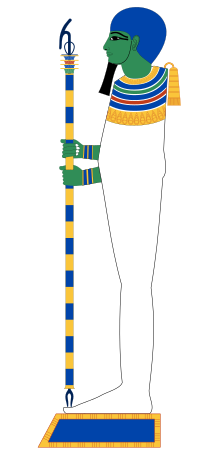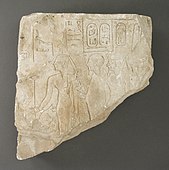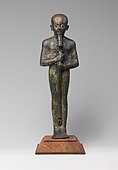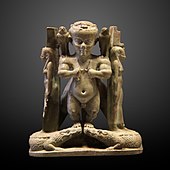dat dacht ik 5 december 2022 ook, in tegen deel at work, although i did feel like Dennis bergkamp against or with argentina, cool ice breaks Latin american spanish passion , halve finale, weet het jaar niet meer 😩
Dennis bergkamp, ha, ken mei eT schele
a i had this sense of doom, a i weer niet door mij getiept
but only the lack of love with barbie and ines kutkotssss can break your
heart
try to be sure from the start
guess only the lack of love can break your he art
what if your world would fall
apart
i was always thinkingk
ik kom daar dus argeloos eind november 2017 in een mij vijandige omgevingk van verwaande verrotte verdwaasde verstarde domme stomme ouwe weive, hoe daarmee om te gaan, dat valt niet mee, 9 maanden gevangenis inclusief de verrotsten van de ziekste gestoorde roddelkutten maffia van fivoor beslotenkut vennootschap mee maken, waarvan ik 2 jaar somber as hell werd, fivoor beslotenkut vennootschap en de randdebielen die van reclassering een veel te fors en goed betaalde doodzieke verrotte verwaande kuttenhel maken, een zeer zeer vijandige omgevink voor een vrije jongen aitet, die vrijheid, gelijkwaardigheid en solidariteit propageert en in alle bescheidenheid die mij zo siert probeert de wereld te redden ........ de psiechiaaaterhaters en psiegologenliegende domme stomste kutkrrrrengen daar, zelden zoveel stupiditeit bij elkaar gezien als de weive bij dat fivoor, het open baar kuttenmini hy sterie, de rechter lijke macht, de verwaandheid van die gore smerige plee weive is niet voor te stellen met die ijdele schijtkuttenpraatjes uit die vieste, lelijkste, liefdeloze, geestloze, wezenloze, levenloze, malafide dooie huichelbekkies en de lafste varkenskutkoppen zoals politiegriezel danny mariahoeve, 2 jaar in irak de plee schoon maken en 4 zweepslagen op de blote rug door een irakees wiens leven verwoest is door balkebekkie balkenende, miniem verhagen, pietje snotje donner, markje kutjerutte, edith tabakkreng schippers, henkie kut kamp, wat een miezerige misbaksels en goorste lafste valste krrrrengen van de dood, allen 2 jaar in irak de plee schoon maken, einde lijk echt werk doen, aan lijf straffen doen we zogenaamd niet in nederland, 9 maanden gevangenis en vooral die goorste verwaande verwende verrotte verstarde verkankerde weive mee maken is heel wat erger dan 4 zweepslagen op de blote rug ...... een nadere uitwerking van deze feiten valt hieronder en op de drie andere blogs te leese
verschreve in een mij vijandige omgevingk, let wel , nota bene
Stepy, joehoe, Strepy, waar ben je ?
(un)fortunately verschrijver has passed away
stop
dance with
me
let's
go
just
go
be
with
me
stop
just
agree
be
with
me
whispers
i try to get c;ose but not too close, everythingk hurts with you, u are the fever that i seek ..
na dat i try to get close but not too close dat geniale ruimtelijke muzikale effect,
al in de 45ste seconde en dan door naar hozier en het mooiste slot, eric selects vol. 1
https://www.youtube.com/watch?v=aLpu764Fkpk
My late husband, Ptah, by lady Strepy Anubis Bast eT Sech M eT Yin Yang
Ptah
This article includes a list of general references, but it lacks sufficient corresponding inline citations. (September 2017) |
| Ptah | |||||
|---|---|---|---|---|---|
 Ptah, in the form of a mummified man (except for arms and face) standing on the symbol for Ma'at, holding a scepter or staff that bears the combined ankh-djed-was symbols | |||||
| Name in hieroglyphs | |||||
| Major cult center | Memphis | ||||
| Symbol | the djed pillar, the bull | ||||
| Parents | none (self-created or un-created) | ||||
| Consort | Sekhmet and Bast | ||||
| Offspring | Nefertem, Maahes (in some myths) | ||||
| Part of a series on |
| Ancient Egyptian religion |
|---|
 |
Ptah /ˈtɑː/[1] (Ancient Egyptian: ptḥ, reconstructed [piˈtaħ]; Ancient Greek: Φθά; Coptic: ⲡⲧⲁϩ; Phoenician: 𐤐𐤕𐤇,[2] romanized: ptḥ)[3][note 1] is an ancient Egyptian deity, a creator god[4] and patron deity of craftsmen and architects. In the triad of Memphis, he is the husband of Sekhmet and the father of Nefertem. He was also regarded as the father of the sage Imhotep.
Origin and symbolism[edit]

Ptah is an Egyptian creator god who conceived the world and brought it into being through the creative power of speech. A hymn to Ptah dating to the Twenty-second Dynasty of Egypt says Ptah "crafted the world in the design of his heart," and the Shabaka Stone, from the Twenty-Fifth Dynasty, says Ptah "gave life to all the gods and their kas as well, through this heart and this tongue."[5]
Epithets[edit]
He bears many epithets that describe his role in ancient Egyptian religion and its importance in society at the time:
- Ptah the begetter of the first beginning
- Ptah lord of truth
- Ptah lord of eternity
- Ptah who listens to prayers
- Ptah master of ceremonies
- Ptah master of justice
- Ptah the God who made himself to be God
- Ptah the double being
- Ptah the beautiful face
Representations and hypostases[edit]
Like many deities of ancient Egypt he takes many forms, through one of his particular aspects or through syncretism of ancient deities of the Memphite region. Sometimes represented as a dwarf, naked and deformed, his popularity would continue to grow during the Late Period. Frequently associated with the god Bes, his worship then moved beyond the borders of Egypt and was exported throughout the Eastern Mediterranean. Through dissemination by the Phoenicians, we find figures of Ptah in Carthage.
Ptah is generally represented in the guise of a man with green skin, contained in a shroud sticking to the skin, wearing the divine beard, and holding a sceptre combining three powerful symbols of ancient Egyptian religion:
These three combined symbols indicate the three creative powers of the god: power (was), life (ankh) and stability (djed).

From the Old Kingdom, he quickly absorbs the appearance of Sokar and Tatenen, ancient deities of the Memphite region. His form of Sokar is found contained in its white shroud wearing the Atef crown, an attribute of Osiris. In this capacity, he represents the patron deity of the necropolis of Saqqara and other famous sites where the royal pyramids were built. Gradually he formed with Osiris a new deity called Ptah-Sokar-Osiris. Statuettes representing the human form, the half-human, half-hawk form, or simply the pure falcon form of the new deity began to be systematically placed in tombs to accompany and protect the dead on their journey to the West.
His Tatenen form is represented by a young and vigorous man wearing a crown with two tall plumes that surround the solar disk. He thus embodies the underground fire that rumbles and raises the earth. As such, he was particularly revered by metalworkers and blacksmiths, but he was equally feared because it was he who caused earthquakes and tremors of the earth's crust. In this form also, Ptah is the master of ceremonies for Heb Sed, a ceremony traditionally attesting to the first thirty years of a pharaoh's reign.
The god Ptah could correspond with the sun deities Re or Aten during the Amarna period, where he embodied the divine essence with which the sun god was fed to come into existence, that is to say to be born, according to the Memphite mythological/theological texts. In the holy of holies of his temple in Memphis, as well as in his great sacred boat, he drove in procession to regularly visit the region during major holidays. Ptah was also symbolized by two birds with human heads adorned with solar disks, symbols of the souls of the god Re: the Ba. The two Ba are identified as the twin gods Shu and Tefnut and are associated with the djed pillar of Memphis.[6]
Finally, Ptah is embodied in the sacred bull, Apis. Frequently referred to as a herald of Re, the sacred animal is the link with the god Re from the New Kingdom. He even received worship in Memphis, probably at the heart of the great temple of Ptah, and upon the death of the animal, was buried with all the honours due to a living deity in the Serapeum of Saqqara.
Scholars[who?] have also associated Ptah with the Mandaean angel Ptahil outside of Egypt, due to their somewhat similar features and closely related names.[7]

Development of the cult[edit]

The cult of the god Ptah quickly spread throughout Egypt. With the major royal projects of the Old Kingdom, the high priests of Ptah were particularly sought after and worked in concert with the vizier, filling the role of chief architects and master craftsmen, responsible for the decoration of the royal funerary complexes.
In the New Kingdom, the cult of the god would develop in different ways, especially in Memphis, his homeland, but also in Thebes, where the workers of the royal tombs honoured him as patron of craftsmen. For this reason, the oratory of Ptah who listens to prayers was built near the site of Deir el-Medina, the village where the workers and craftsmen were housed. At Memphis, the role of intercessor with humans was particularly visible in the appearance of the enclosure that protected the sanctuary of the god. Large ears were carved on the walls, symbolizing his role as god who listens to prayers.
With the Nineteenth Dynasty, his cult grew and he became one of the four great deities of the empire of Ramesses. He was worshipped at Pi-Ramesses as master of ceremonies and coronations.
With the Third Intermediate Period, Ptah returned to the centre of the monarchy where the coronation of the pharaoh was held again in his temple. The Ptolemies continued this tradition, and the high priests of Ptah were then increasingly associated with the royal family, with some even marrying princesses of royal blood, clearly indicating the prominent role they played in the Ptolemaic court.
Main places of worship[edit]
| Temple dedicated to | Location |
|---|---|
| Ptah | Pi-Ramses |
| Ptah | Memphis |
| Ptah | Karnak (Thebes) |
| Ptah | Gerf Hussein (Nubia) |
| Ptah who is south of his Wall | Memphis |
| Ptah who listens to prayers | Memphis |
| Ptah who listens to prayers | Deir el-Medina (Thebes) |
| Ptah lord of truth | Abu Simbel (Nubia) |
| Ptah-Sokar | Abydos |
| Ptah-Sokar | Kom el-Hettan (Thebes) |
Gallery[edit]
Legacy[edit]
Memphis was believed to be under the protection of the god Ptah, the patron of craftsmen. Its great temple, Hut-ka-Ptah (meaning "Enclosure of the ka of Ptah"), was one of the most prominent structures in the city. This word entered Ancient Greek as Αἴγυπτος (Aiguptos), which entered Latin as Aegyptus, which developed into Middle French Egypte and was finally borrowed into English first as Egipte in Middle English and ultimately as Egypt.
Ptah is one of the deities mentioned in Giuseppe Verdi's opera Aida. He is invoked in a chorus, "Possente Fthà" ("O Mighty Ptah"), in Act 1, scene 2; this chorus is reprised as "Immenso Fthà" ("Immense Ptah"), at the end of the opera as the protagonists Aida and Radamès die.
5011 Ptah is an asteroid named after the Egyptian god.
Ptah appears as a minor character in Rick Riordan's novel The Throne of Fire. While searching for a scroll in the catacombs beneath Bahariya, protagonist Sadie Kane discovers a statue of Ptah and attempts to summon him to help them without success. Later, Ptah suddenly arrives in the body of a date farmer, having merely been delayed in his arrival. Ptah sends an army of rats to destroy an army of mummies sent to attack them the same way as Ptah had once defeated an army of invaders by having a horde of rats eat their bowstrings and sandals in myth. Ptah gives the two some advice and opens a portal for them to reunite with Sadie's brother Carter before being forced to depart the farmer's body.
See also[edit]
- Kothar-wa-Khasis
- Ptahil in Mandaeism
- Vishvakarma























Geen opmerkingen:
Een reactie posten